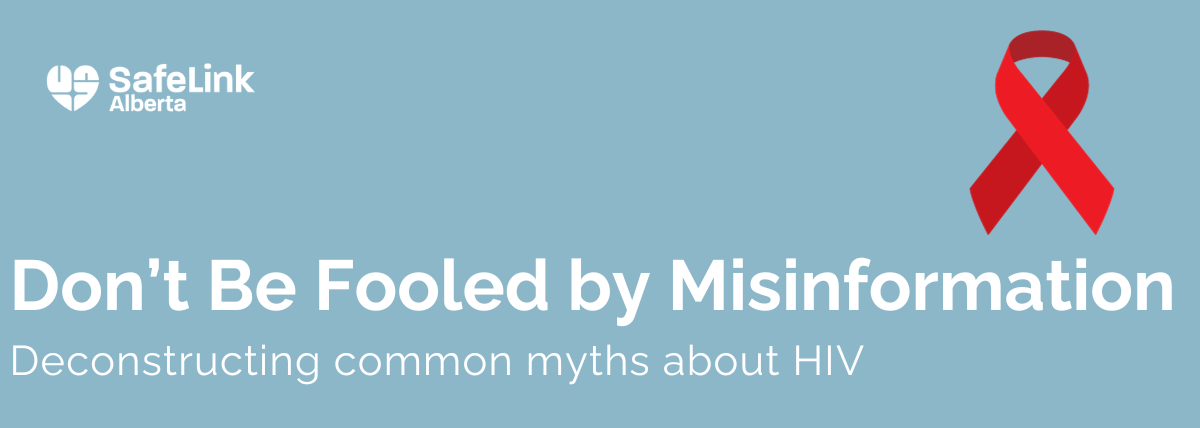And there seems to be a lot of myths out there, particularly when it comes to HIV. We are breaking down some common myths we have heard around the community about HIV and addressing them with facts!
Myth 1: “You can get HIV from a toilet seat.”
Fact: HIV is only passed by these five body fluids:
- Blood
- Semen (including pre-cum)
- Rectal fluid
- Vaginal fluid
- Breast milk
This means that you cannot get HIV from a toilet seat, as it is not passed through urine. It is also not passed by saliva; therefore, it is not passed by kissing, coughing, sneezing, or spitting. HIV is also not transmitted by casual contact such as hugs or handshakes. It cannot be passed by sharing a space with someone (CATIE, n.d.).
Myth 2: “It is really common to get HIV from needle stick injuries.”
Fact: Needle stick injuries can be scary! However, they have a very low transmission rate. Less than 1% of needle stick injuries result in HIV transmission (CDC, 2019). Because the risk of transmission is so low, PEP (post-exposure prophylaxis) is rarely given for needle stick injuries obtained in the community, as per the Government of Alberta Ministry of Health (2019, p. 31). If you happen to get a needle stick injury, it is okay to be anxious! Know that you are unlikely to get HIV from your injury and call 811 or your family doctor for more information.
Myth 3: “If someone has HIV, they will always transmit the virus to other people.”
Fact: HIV treatment is HIV prevention, known as TasP (Treatment as Prevention). Another way you may hear people refer to this is U=U (Undetectable = Untransmissible). HIV treatment can reduce a person’s viral load (the amount of virus in the blood) to undetectable levels. If a person has an undetectable viral load, they cannot pass the virus to their partners. Treatment is so effective that people can have an undetectable viral load within 3-6 months of starting treatment, (CATIE, n.d.). To learn more about the Undetectable = Untransmittable international campaign, please visit https://safelinkalberta94957.e.wpstage.net/prevention-uu/
Myth 4: “People with HIV can’t have long healthy lives.”
Fact: Not only can treatment reduce a person’s viral load to undetectable levels, but people can live long and healthy lives on HIV treatment. HIV is not curable, but it is managed with treatment. HIV treatment limits the ability of HIV to replicate in a person’s body, which “prevents further damage to the immune system,” (Harrigan, 2022). Treatment is best started as soon as possible and is a lifetime commitment. Treatment has come a long way! Many treatments are now single pills, and side effects are also much improved from the initial HIV treatments; many people experience mild and short-term side effects (Harrigan, 2022).
Myth 5: “I would know if I was HIV positive.”
Fact: The only way to know your HIV status is to get tested! Getting tested is a great way to take charge of your health, and testing is a normal part of routine health care. Sometimes people will have flu like symptoms such as sore throat, fever, swollen glands (CATE, n.d.). But most often, people have no symptoms. It is very possible to have HIV and not know, therefore testing is the only way to know your HIV status. Ask your family doctor for HIV and other STBBI testing or stop by our offices for drop in STBBI testing, no appointment necessary. In Medicine Hat, testing is the third Thursday of each month from 1pm-4pm, and in Calgary the first and third Thursday of each month from 1-4pm. We also have HIV self-test kits, available in both locations any weekday afternoon, and our team is happy to answer any questions you may have about how to use one.
To learn more about HIV self-test kits and where to get them, check out our blog post here: https://safelinkalberta94957.e.wpstage.net/hiv-self-testing-kits-what-you-need-to-know-and-where-to-find-them-in-calgary-and-medicine-hat/
- CATIE. (n.d) HIV basics. CATIE. https://www.catie.ca/essentials/hiv-basics
- CDC. (2019, September 5). HIV and occupational exposure. https://www.cdc.gov/hiv/workplace/healthcareworkers.html
- Harrigan M., (2022). HIV treatment. CATIE. https://www.catie.ca/hiv-treatment-1
- Ministry of Health, Government of Alberta. (2019, March). Alberta guidelines for post-exposure management and prophylaxis: HIV, hepatitis B, hepatitis c, and sexually transmitted infections. https://open.alberta.ca/publications/9781460143360

